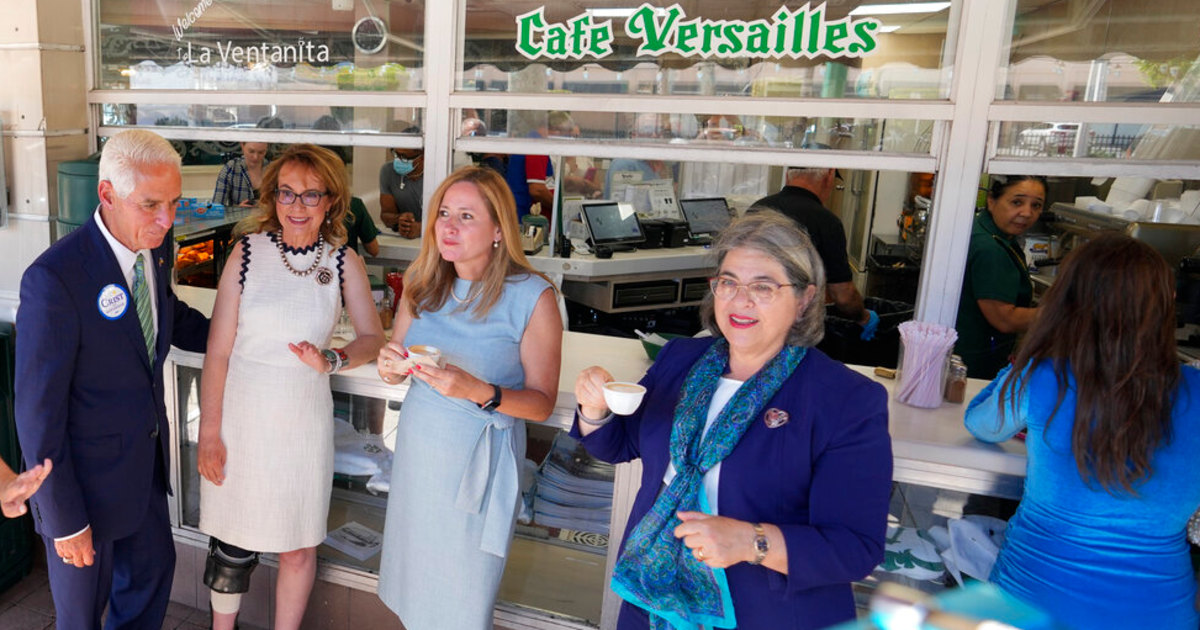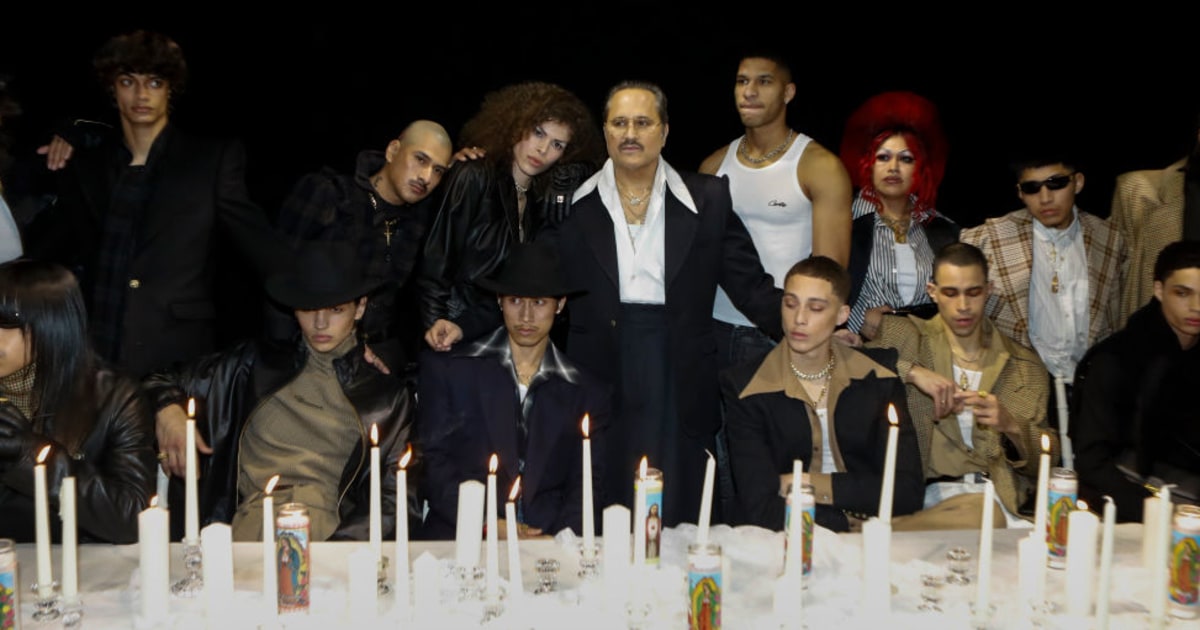By Marina E. Franco and Russell Contreras
Welcome to Axios Latino, a newsletter designed to tell you every week the stories that have a special impact on Latino communities in the United States and in Latin America.
If you are interested in subscribing and receiving it in your mail [in English], you can do so by clicking here. Every week we will publish the newsletter in Spanish here on Noticias Telemundo for those who prefer it that way.
This is a special edition in which we take a tour of the works we are reading of Latin and Latin American literature and history in the US so you can make your reading list for this summer.
[
Sign up here to read the newsletter in Spanish
]
Our thoughts are with the legendary Niuyorican writer Nicholasa Mohr, who is in advanced stage of Alzheimer's.
The Bronx Remembered
is with us forever, teacher.
1 topic to highlight: The new
boom
in Latin American literature is led by women
Photo illustration: Sarah Grillo / Axios.
Photos: David Levenson, Ray Tang / Anadolu Agency / Getty Images
The magical realism of Gabriel García Márquez and Juan Rulfo is fading as a new Latin American literary movement, led by women, is using the gothic and the
noir
to create harsh new realities.
Why it matters:
From Argentina to Mexico and from Chile to Peru, these authors are turning their attention to horror to address tangible issues surrounding missing political prisoners, femicides, and otherness.
Mexican novelist Fernanda Melchor and Chilean writer Lina Meruane are making an international impact with books that focus on everyday violence through terror, at times fast-paced, other times captivating, and occasionally beautiful.
The macabre works of Argentine Samanta Schweblin and Mariana Enríquez, full of suspense, are in the final selection for international awards.
The works of these four have been translated into English in recent months.
The intrigue:
These writers follow in the footsteps of authors such as Rosario Castellanos, Silvina Ocampo, Clarice Lispector and Elena Garro.
They were less internationally recognized during
the 1960s
boom
than their male counterparts, but they have been steadily gaining popularity.
Between the Lines:
Reframing the Horrors of Real Life is also at the core of today's most prominent male Latin American authors, notably Alejandro Zambra.
What is being said:
These are "stories that break tradition and, despite or because of that originality, we are drawn to readers. And if they make us laugh in the process, so much the better," said Megan McDowell, who he has translated works by Schweblin, Zambra, Meruane and Enríquez.
2. Latina writers in the United States address race, violence, and sexuality
Naima Coster and Kirstin Valdez Quade. Sylvie Rosokoff / Justin Baker / Getty Images
Contemporary American Latin literature has never been as diverse as it is now, and lately, women are redefining the canon.
Why It Matters:
Since the Chicano Renaissance and the Niuyorican movement of the 1960s and 1970s, more second-generation Dominican-American black and Colombian-American writers have entered the scene to challenge notions of race, gender, and sexuality.
The details:
Dominican Naima Coster
's
powerful novel
What's Mine and Yours,
released this year, delves into multiracial North Carolina through the eyes of children.
Coster follows in the footsteps of other Dominican-American novelists, Angie Cruz and Nelly Rosario, who created strong female leads in a black and white world where they feel they don't fit in.
Also keep an eye out for:
Patricia Engel, the New Jersey-raised Colombian-American, and her captivating new novel,
Infinite Country,
takes us through a horrifying saga of migration through the story of a mixed-status family.
Kirstin Valdez Quade, raised in New Mexico, in
The Five Wounds
takes us into the world of the Padilla family, struggling with poverty, guilt instilled by religion and the feeling of never feeling enough.
Nicaraguan poet Ernesto Cardenal, 95, dies
March 1, 202000: 22
To highlight:
The Lost Book of Adana Moreau
, by Ecuadorian-American Michael Zapata, is a "love letter to the history of speculative fiction and science fiction" and is part of the growing Latin-Futurism movement.
And we couldn't stop reading
, Hey Daddy !: How to Come Out of the Closet in a Walmart Parking Lot and Other Life Lessons
, John Paul Brammer's Fascinating Essay Collection.
3. The voices of Latin America and the Caribbean are increasing
Dainerys Machado Vento, author of Las noventa Habanas.-
The future of literature in Spanish will come from writers who rely on captivating and varied voices and on the "increasingly local permutations" of "a single language with infinite bifurcations", writes the literary magazine Granta
The Details:
Some of the top 25 Spanish-language novelists under 35 that Granta includes:
Ecuadorian Mónica Ojeda, whose novel,
Mandíbula
, explores relationships between women through a fairy tale involving a kidnapping.
The English translation will be published in February.
Eudris Planche Savón, who trained as a doctor in Cuba before publishing the book for young
Exchange Sisters.
Dainerys Machado, a compatriot of Savón and the first Cuban to receive an F-1 student visa to the United States, is also on the list thanks to her short stories,
Las noventa Habanas
.
Andrea Chapela, from Mexico, is a chemist who has already published the science fiction series
Vâudïz
, and this year she launched
Ansibles, profilers and other ingenuity machines
, reminiscent of the
Black Mirror
program
.
Peruvian Miluska Benavides, who is about to publish her first novel,
Hechos.
José Adiak Montoya, from Nicaragua, has published four books when he is only 30 years old.
His most recent novel imagines a life for John Lennon had he been born in Nicaragua under the infamous dictator Anastasio Somoza.
Also keep an eye out for:
The Colombian Vanessa Londoño has just published
The Animal Siege
and the Chilean Diego Zúñiga published
Camanchaca.
It should be noted:
the previous edition of Granta of the best authors in Spanish, in 2010, included Samantha Schweblin, Antonio Ortuño and Alejandro Zambra.
4. Dismember the Alamo?
The Alamo in Texas.
Robert Alexander / Getty Images
Works on US Latino history that contribute to the heated debate over critical race theory are often overlooked.
How odd.
Especially since one of the founders of the theory is the Mexican American scholar Richard Delgado.
The Details:
Delgado's
updated
Critical Theory of Race: An Introduction
is an excellent starting point for reacquainting yourself with how systemic racism harms Latinos and why the Alamo myth does not mention efforts to preserve the race. slavery.
Forget the Alamo: The rise and fall of an American myth
has received attention lately, but those arguments had long been articulated by Chicano historians like Rodolfo Acuña.
Did Latinos face racial terror?
Yes.
Read
Injustice Never Leaves You: Anti-Mexican Violence in Texas
by Monica Muñoz Martínez, who documents the lynchings of Mexican Americans.
An important note:
For an intelligent look at contemporary Latino politics beyond the 10-second clips, explore
Figures of the Future: Latino Civil Rights and the Politics of Demographic Change
by Michael Rodríguez-Muñiz.
Rodríguez-Muñiz investigated for eight years why the growth of Latinos in the United States has not led to lasting political power.
5. Through these harsh streets of Machete
Actor Danny Trejo.
Matt Winkelmeyer / Getty Images
Danny Trejo, known as the murderer Machete and the
Breaking Bad
Tortuga cartel drug lord
who had his head cut off, has published deeply personal memoirs.
Why It Matters:
Trejo: My Life of Crime, Redemption, and Hollywood
chronicles the rise of the ex-crime convict and addiction to movie stardom.
It follows a long tradition in American Latino literature of marginalized men turning pain into profit.
The Mexican-American actor told USA Today that he wrote the book to detail his life in and out of prison, his battle with drugs and how he came to terms with his toxic masculinity.
The Intrigue:
His memoirs follow the tradition of the late Puerto Rican-Cuban writer Piri Thomas's best-selling autobiography,
Down These Mean Streets
, who influenced countless Latino writers, including novelist Ernesto Quiñonez.
It is also similar to
Always Running
by Luis J. Rodríguez and
A Place to Stand
by Jimmy Santiago Baca.
What is being said:
"Yes, these books are full of violence and drugs, but they have also served as a gateway for some young people to become interested in writing. They can see themselves here," said novelist Tony Diaz, founder of Our Word in Houston.
6. Poetry will be decolonized
The poets Matt Sedillo and Diana Marie Delgado.-
Mexican-American poet
Akimel O'odham,
Natalie Díaz, won the Pulitzer Prize for poetry this year for her second book of poetry,
Poema de amor postcolonial
, which highlights poets from the American Southwest.
The Details:
In recent years, Mexican-American poets have produced works influenced by Native American, African-American, and foreign writers that address past violence, the environment, and their decolonized souls.
Albuquerque expoet laureate Michelle Otero recently published her debut collection,
Bosque
, which lyrically describes how the Rio Grande River is drying up thanks to the climate emergency.
Diana Marie Delgado, the literary director of the University of Arizona Poetry Center, born in California, launched her first collection,
Tracing the Horse
, a look inside to combat trauma and a troubled childhood.
Matt Sedillo's Mowing Leaves of Grass
is a not-so-subtle call to dethrone Walt Whitman and replace the American canon with the voices of the growing majority: Latinos who now refuse to keep quiet.
Don't forget:
The Texas state legislature named Houston-based poet Lupe Méndez as the state's 2022 Poet Laureate as state lawmakers seek to remove Latino history from public schools.
His 2019 collection,
Why I Am Like Tequila
, is a tribute to Latinos who refuse to forget the past.
A smile to finish: coloring dreams that came true
Guatemalan illustrator publishes a children's book that honors 40 great Latin American women
May 22, 202101: 46
Forty Latin American and Latina women are front and center of a new children's book by Guatemalan illustrator Juliet Menéndez.
The details:
Latinitas: Celebrating 40 Big Dreamers
includes short biographies of women such as Salvadoran engineer Antonia Navarro, Colombian pro-independence rebel Policarpa Salavarrieta, Venezuelan pianist Teresa Carreño, and Guatemalan activist Rigoberta Menchú.
The biographies focus on how childhood dreams led women to fight for what they wanted and deserved.
The watercolors were made by hand, in a process that took Menéndez up to two weeks each.









